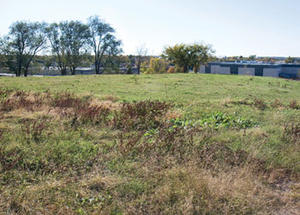Work begins on the new U.S. premier BioLab
DHS has released $40 million to allow work to begin on the U.S. new National Bio and Agro-Defense Facility, located on the campus of Kansas State University; the lab will replace the aging lab on Plum Island as the premier research center to combat the threat of naturally occurring animal diseases or agroterrorism; the Levl 4 BioLab will conduct research on human and animal disease to which there is yet no known cure

Site of the NBAF in Manhattanville, Kansas // Source: siteselection.com
Construction will begin this fall as KC Animal Health Corridor welcomes the building and relocation of the DHS’s $150 million National Bio and Agro-Defense Facility (NBAF).
Manhattan, home of Kansas State University’s College of Veterinary Medicine, will become the new home of the U.S. premier research center to combat the threat of naturally occurring animal diseases or agroterrorism.
DVM360 reports that earlier this year, DHS released some $40 million in funding to move forward with construction plans. While the research center will not be completed until 2018, there is a lot of work happening now to pave the way for the transition, says Dr. Ralph Richardson, dean of Kansas State University’s College of Veterinary Medicine.
“This is a once in a multi-generational opportunity specifically for Kansas State University and the College of Veterinary Medicine,” Richardson told DVM Newsmagazine at the recently concluded CVC Kansas City. “To my knowledge, there has never been in the United States a federal laboratory of the level of NBAF co-located with a university that has an agricultural college, veterinary college, a division of biology and people interested in animal diseases.”
Coupled with a relocated United States Department of Agriculture Animal Research Service (ARS) Arthropod-Borne Animal Disease Research Laboratory, Richardson says the next few years will be a delightful time for KSU. “It brings marvelous opportunities for the country and the world.”
Richardson is referring to the collaborative spirit that this laboratory relocation has created within Manhattan and KSU.
When it is all said and done, NBAF will bring some 300 scientists and highly-trained technicians to the area. And it’s creating opportunities for veterinarians with a combined DVM/MPH program. “It is the fastest growing graduate program I have ever experienced,” he says. All of the activity is important preparation for the transition of the Plum Island facility off the coast of New York.
Crews have been clearing the site and removing buildings. The sewer and water lines are in, and the construction on the building is expected to begin this fall. In addition, KSU’s veterinary college moved its teaching facilities about three-quarters of mile from the veterinary college. This facility will be open and fully operational by the first of November. “It will improve the quality of the housing we need. We have realized though this doesn’t meet the quantity of housing we need which will eventually be necessary to ramp up and get ready for the federal laboratory activities,” Richardson adds.
In the next few weeks, Richardson says officials are waiting for the release of a National Academies report on conducting foot-and-mouth disease research on the mainland of the United States. He’s confident the findings will support relocation of the laboratory to Kansas.
